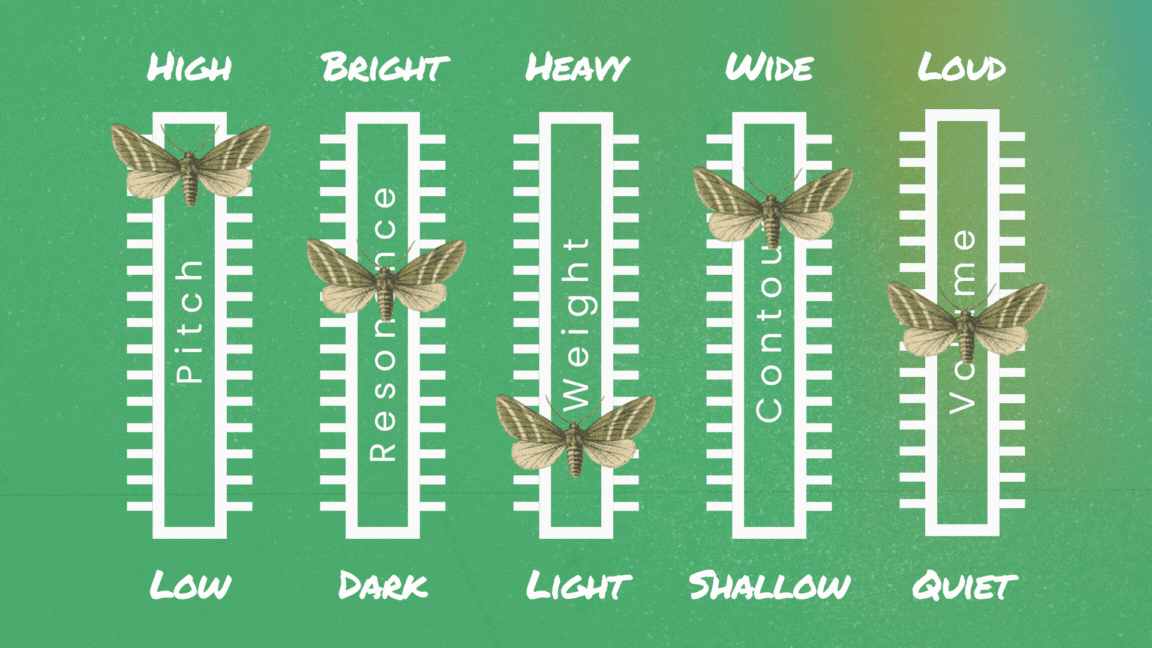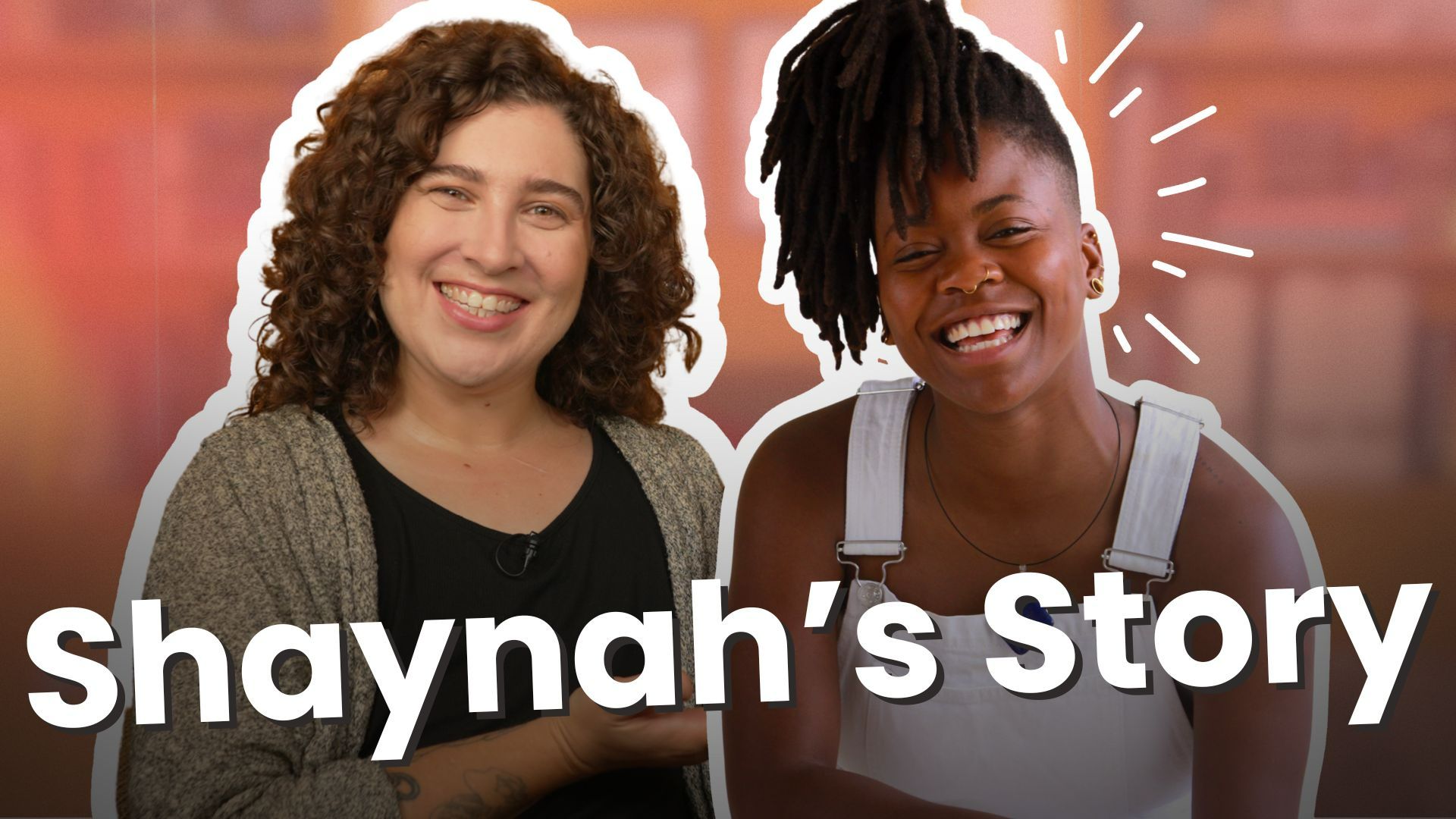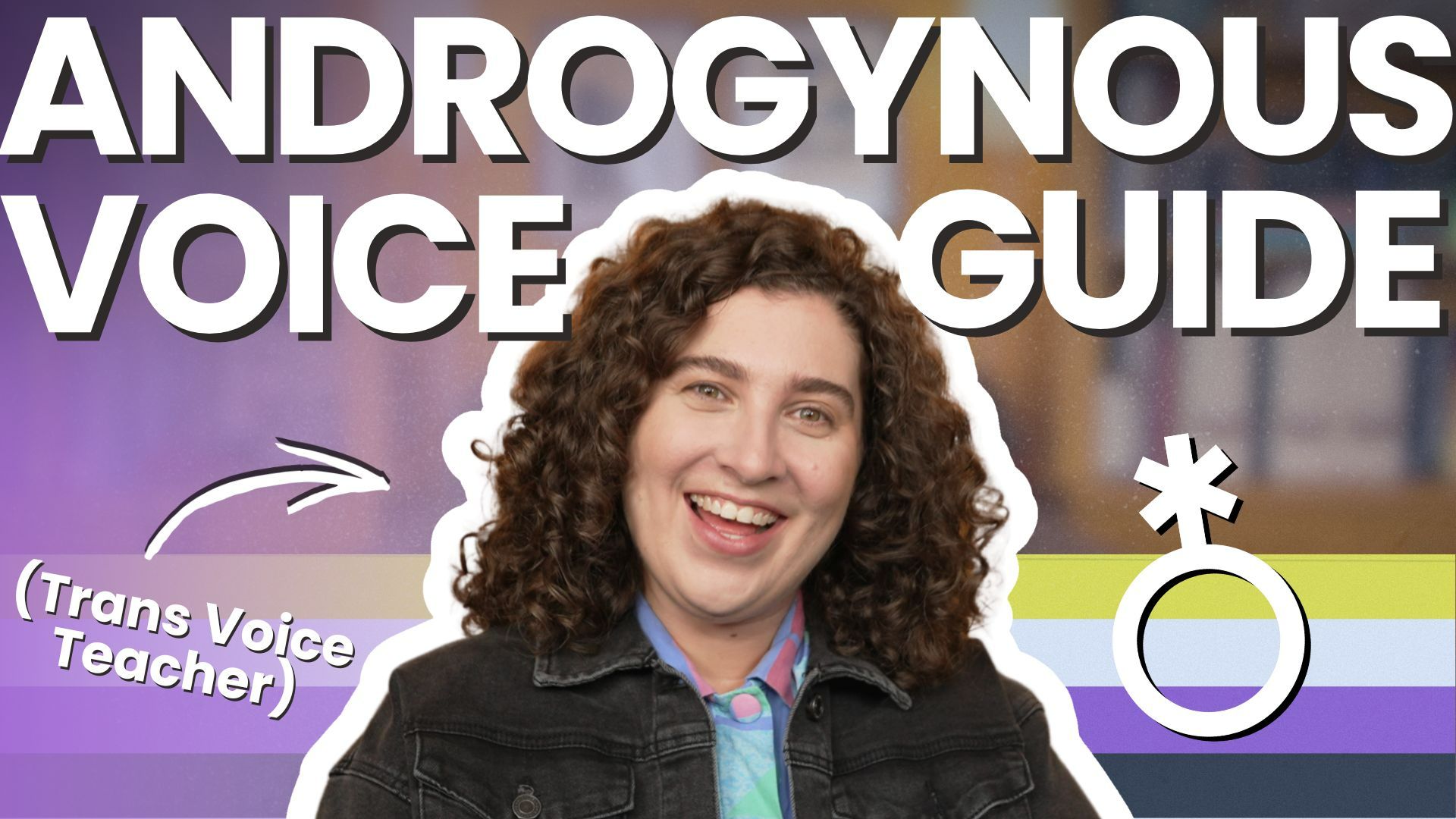How to Achieve a Deep, Low, Dark Feminine Voice: A Complete Guide
Oct 23, 2025
When people ask me about creating a "deep feminine voice," I know they're searching for something specific, but what they're looking for varies widely from person to person.
Some want a low-pitched voice, others seek darker resonance, and many are chasing that elusive "sexy, sultry" quality they've heard in certain voices.
As a gender-affirming voice teacher, I've spent years helping trans women and transfeminine students navigate voice feminization and MTF voice training—especially this complex topic. Voice and communication therapy is recognized as an essential component of gender-affirming healthcare for transgender and gender diverse people.
But I'll be honest: I put off creating comprehensive content about deep feminine voices because I knew that once I took a closer look, I'd find layers of complexity that challenge our simple assumptions.
But that complexity is actually good news.
It means there's no single "correct" way to have a deep feminine voice, and the possibilities for trans voice training are far more expansive than you might think.
Watch or Read: Your Choice
Prefer video? Check out the full review on my YouTube channel:
Prefer to read? Keep scrolling for a complete breakdown of deep feminine voices, what they really are, and how to work toward one.
Understanding Voice Terminology: What "Deep" Really Means in Voice Feminization
Before we dive deeper, let's clarify our language.
When people say they want a "deep" voice, they may be referring to several different vocal qualities:
- Low pitch – the musical note of your voice
- Dark resonance – the tone quality
- Breathy quality – the amount of air in the voice
- Heavy vocal weight – the thickness or fullness of the sound
- "Sexy" quality – a subjective perception many seek
To help visualize these different elements, I created a mixing board tool that breaks down the key characteristics we modify in trans voice training.

The Five Key Voice Characteristics
The mixing board includes:
- Pitch: High to low (the musical note)
- Resonance: Bright to dark (the tone colour)
- Weight: Light to heavy (the thickness of the sound)
- Contour: Wide to shallow (the melodic range in speech)
- Volume: Loud to quiet (affects how other characteristics are perceived)
You can find this mixing board tool in my freebies library. It's an excellent way to analyze voices you admire and understand what specific qualities you're drawn to.
I don't go into details about each quality in this post, but if you want to learn more, check out my Gender-Affirming Voice 101 series. or this relevant post:
The Incredible Variety of Deep Feminine Voices
Here's where things get interesting: "deep feminine voices" encompass an enormous range of vocal configurations.
In the video above, I analyze several examples including:
- Audrey Nuna / May Hong (Mira from KPop Demon Hunters)
- Rosa Diaz from Brooklyn Nine-Nine
- Kara Jackson
- Shohreh Aghdashloo
- Young M.A
- Betty Carter
- Kim Kardashian
- Kim Cattrall in Sex and the City
Watch the video to hear these examples and see how each voice maps differently onto the mixing board.
Each of these voices is considered "deep," yet they're remarkably different from each other.
Some are low in pitch but bright in resonance. Others are dark in resonance but not particularly low in pitch. Some are breathy and light, while others have more weight and fullness.
An Important Note About "Natural" Voices
If you think these deep voices are only something cisgender women are born with, consider this:
Stephanie Beatriz (who plays Rosa Diaz) consciously developed that deep, commanding voice for the character. She had to build it and practice switching into it on command. (And in case you forgot, both Stephanie Beatriz and Rosa Diaz are bisexual queens!)
This proves that deep feminine voices can absolutely be developed and modified through voice training. They're not just something you're born with.
The Myth That Deep Feminine Voices Are "Easier" for Trans Women
While transgender voice training research shows that voice feminization is achievable for all trans people, the relationship between starting pitch and ease of feminization is more complex than many assume.
People assume this because trans women often start with a lower average pitch and darker resonance.
This is actually backwards. If anything, deep feminine voices are harder to achieve.
Why Lower Doesn't Mean Easier
The problem comes down to the relationship between effort and perceived pitch.
When we hear someone's voice, we're not just hearing the frequency. We're also perceiving it combined with the effort it takes to produce that sound.
For example, when I sing a middle C (around 260 Hz), it feels like about 3 out of 10 on the effort scale for me, since I never experienced a testosterone puberty.
But if someone who has experienced testosterone puberty tries to match my effort level rather than my pitch, they'll typically produce a note an octave lower.
The Effort Problem
This effort-versus-actual-pitch disconnect creates a significant challenge:
Many deep feminine voices sound effortless, but when a trans woman creates a voice that feels low-effort to produce, it often doesn't achieve the feminine quality she's seeking.
So what I'm trying to say here is that deep feminine voices are actually kind of a Trans Voice Training 201 goal—you've accidentally enrolled yourself in an AP class.
This Is Advanced Voice Training
It requires:
- Already having solid control over brightness (resonance)
- The ability to maintain light vocal weight
- Skill in keeping these qualities stable while lowering pitch
This is definitely not something that "should" be your goal just because you have a lower starting pitch.
It should be your goal if you want it and if it inspires you to work toward it.
Getting Specific About Your Voice Feminization Goals
If you're seeking a deep fem voice, now is the perfect time to refine what you actually want.
Use these questions to guide your exploration:
- Do you want a voice that's low in pitch, dark in resonance, or both?
- Are you drawn to breathy, light voices or fuller, heavier ones?
- Do you prefer a shallow contour (less melodic variation, like Rosa Diaz) or a wide contour (more expressive range, like Kara Jackson)?
- What adjectives describe your ideal voice? Sexy? Confident? Bold? Cool? Commanding?
Watch the video examples above and pay attention to which voices resonate with you.
Notice what specific qualities draw you to certain voices over others.
If you're having trouble identifying these individual characteristics in the voices you're listening to, another great way to describe voices you love is with adjectives like sexy, confident, or bold.
Maybe you want to sound just like Audrey Nuna, or maybe you want to sound cool and nonchalant.
Want a Sexy, Sultry Voice?
If your primary goal is sounding sexy, breathy, and sultry, I have good news:
You can achieve this without necessarily focusing on pitch or resonance at all!
I have a dedicated video on this topic that covers exactly how to create that quality.
Practical Feminine Voice Exercise: Lowering Pitch While Maintaining Femininity
You know I couldn't let you go without at least giving you one hands-on voice feminization exercise, right?
This is a 201-level exercise, so I recommend it primarily for trans women and transfeminine people who can already create a feminine voice that's bright and light, but who want to lower the pitch.
Sometimes, attempting to lower the pitch of your voice causes you to accidentally let all your other qualities slip.
To avoid this, we're going to find a reference pitch, and then bring it down step-wise.
Step-by-Step Pitch Lowering Exercise
What you'll need: A tuner app and a piano or piano app
Step 1: Find Your Reference Note
Choose one short word or phrase.
Speak it into your tuner and identify one note you're speaking on. Speech contains multiple notes, so don't worry about being perfect here.
Step 2: Play Your Reference
Play your reference note on a piano and speak after it, matching the pitch.
Step 3: Move Down Chromatically
Move your reference note down by one semitone (the next key to the left on the piano.)
We call this movement "chromatic."
Step 4: Speak at the New Pitch
Repeat your short word or phrase, starting with your new reference note.
The goal here is that the pitch shift is small enough that you're able to easily maintain your other characteristics by not shifting too much at once.
Step 5: Continue Step-Wise
Keep going like this, one note at a time, until you find a new pitch range that you like.
Important Guidelines for This Exercise
If you reach a point where you're not able to maintain your desired resonance and lightness while adjusting pitch, stop for the day and try again tomorrow.
This pause will help you start building the muscle memory over time. And with repeated practice, you'll develop more control over the individual characteristics.
Key Takeaways About Deep Feminine Voices
1. Variety is the Rule, Not the Exception
Deep feminine voices come in an incredible variety of configurations.
There's no single "correct" way to have a low, dark, or deep feminine voice. The landscape is as varied as there are women in the world.
2. It's Not the "Easy" Path
Despite what many people assume, creating a deep feminine voice while maintaining other feminine qualities is actually an advanced skill.
The lower starting pitch doesn't make it simpler—it often makes it more complex.
3. Get Specific About What You Want
"Deep" is too broad a term.
Take time to identify whether you're drawn to low pitch, dark resonance, breathy quality, or some other combination.
Use the mixing board tool and the video examples to pinpoint exactly what appeals to you.
4. Small Steps Prevent Overwhelm
The chromatic pitch-lowering exercise works because it breaks down the change into manageable pieces.
You maintain control over your other voice characteristics while making tiny adjustments to pitch.
Free Resources for Deep Feminine Voice Training
The mixing board tool mentioned in this post is available for free in my freebies library, along with other voice training resources to support your journey. Or you can access it by filling in the form below!
Get the Mixing Board tool now!
If you're interested in learning more about the fundamentals of voice feminization before tackling a deep feminine voice, check out my voice feminization playlist or explore my course Mindful Voice Feminization.
In the course, we cover all the voice feminization information you'll need to create a voice that feels like you. If you've been thinking about trans voice lessons, this is your sign to start!

Mindful Voice Feminization
Conclusion: Your Deep Feminine Voice Journey
The depth and breadth of deep feminine voices is truly remarkable.
Whether you're drawn to the commanding quality of Shohreh Aghdashloo, the cool nonchalance of Rosa Diaz, or the expressive range of Kara Jackson, there's room for your authentic voice in this vast landscape of trans voice training possibilities.
Remember: Deep feminine voices aren't necessarily easier to achieve just because they start from a lower baseline.
They're advanced voice feminization goals that require solid fundamentals and careful attention to maintaining brightness and lightness while lowering pitch.
But with the right approach (like getting specific about your goals, using tools like the mixing board, and practicing the step-wise pitch-lowering exercise), you can work toward the deep fem voice that feels right for you.
Ready to explore your feminine voice?
Sign up for my free one-hour masterclass, Change The Gender of Your Voice: No Hormones or Surgeries Required, and work with a transgender voice coach who understands your journey.
Want weekly tips, resources, and insights on trans voice training? Sign up for my newsletter and get the latest content delivered straight to your inbox. It's free!











